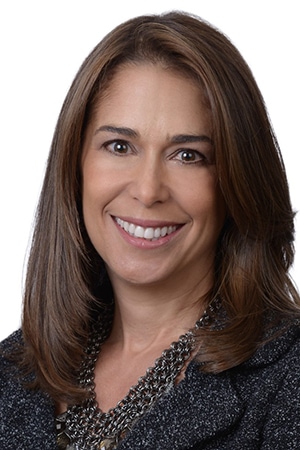Large companies around the world are breaking off pieces or breaking up in record numbers. Will the boom last?

Global conglomerates from the Americas to Europe to Southeast Asia are slimming down and muscling up to address activist investors’ demands for higher returns and improved operational performance—and, perhaps, to cash in before the decade-long bull run in equities peaks.
Activist investing is poised for another record year in 2018. Activist investors had targeted 610 companies worldwide by the end of June, according to research firm Activist Insight, with most of the action occurring in North America. More than 100 spinoffs were announced on US exchanges in the first half of 2018, up 54% year-on-year, according to Bloomberg.
Global trade disputes, rising interest rates and high valuations did not stop the rally that lifted the S&P 500 and other major indexes in 2018; but financial executives are studying strategies to benefit from the spinoff wave before bearish signs resurface.
“Over the 10 years that we’ve been analyzing spinoffs, the bulk of activity in corporate breakups has been close to the bottom or near the top of an economic cycle,” says Jim Osman, CEO of The Edge Consulting Group. “While we are not calling the top of the market right now, we believe that the value in a lot of companies has been realized; and in order to provide even greater value, corporates as well as the activists we advise are examining ways that this can happen. Spinoffs are great for giving shareholders that.”
Among major household names planning a spinoff, Osman singles out Honeywell and DowDuPont. “We would encourage investors to examine [these] closely for hidden value,” Osman says. Honeywell will break up its $4.7 billion Homes and ADI Global Distribution and its $3 billion transportation-systems businesses into two publicly traded companies by the end of this year. Chemical giant DowDuPont is splitting into three companies: Dow (materials sciences), Corteva Agriscience (agriculture) and DuPont (specialty products).
Also in the pipeline are General Electric’s spinoff of its health-care business—and possibly other units—as the conglomerate absorbed another C-suite shake-up last month and struggles to regain profitability. German conglomerate Thyssenkrupp announced in September that it will split itself into independent capital goods and materials businesses. And in China, the second-largest life insurer, Ping An, is reportedly considering splitting into four companies.
Analysts at Bain & Company expect spinoffs to pick up speed in Southeast Asia and India. Asian conglomerates, which outperformed pure plays from 2007 through 2016, have seen their privileged access to capital markets and regulators shrink as the markets mature. In 2018, total shareholder return for Asian conglomerates dropped to 11%—behind pure plays (at 12% TSR) for the first time in 15 years. “As conglomerates’ performance suffers, there will be calls from skeptical investors to break them up,” the Bain study concludes. “That is what happened in the West.”

Schleicher: In a bull market, it seems logical that activist investors would have more confidence that the sum of the parts would equal more than the whole. |
The Sum of Parts
There are several reasons why companies decide to spin off a business—distributing shares to current shareholders rather than selling it outright—depending on the parent company’s needs and the state of the markets.
“Selling a business for cash makes sense when there is a use for the cash and management can allocate the proceeds to something that drives higher return on invested capital,” says Debbie Schleicher, a strategic chief financial officer currently advising companies. Carrying too much cash on the balance sheet, on the other hand, can invite a takeover or frustrate investors looking for a dividend, she says. In that scenario, a spinoff may make sense.
“In a bull market, it seems logical that activist investors would have more confidence that the sum of the parts would equal more than the whole; so the influence of the investor’s voice may be louder,” says Schleicher. Since many breakups involve an initial public offering, a healthy IPO market can also prop up the value of the spinoff, she adds.
In bear markets, companies frequently divest bad businesses, and shareholders choose between cashing out and holding on. “Both provide an opportunity for shareholders if analyzed correctly,” Osman says.
Investors’ priorities will determine in whose hands the new company finds itself. While value-driven shareholders may prefer to sell in return for cash, growth-oriented investors may be satisfied to hold the spinoff shares and realize value in the future, Schleicher says.
For the mother company, spinoffs can be time-consuming and resource intensive; but they help leadership focus on improving the execution of its growth strategy.
Mark E. Newman, the CFO of US chemical company Chemours, says the company’s July 2015 spinoff from DuPont brought much clarity to its strategy. “When we spun, we immediately set to work on what we called the five-point transformation plan,” Newman says. “The goal was essentially to double the earnings of the company and significantly delever the company.”
Chemours reported adjusted core earnings (EBITDA) of $1.4 billion in 2017, up 73% from the previous year. Debt dropped from 6.7 times EBITDA at the spinoff date to a little over double in 2017. “The fifth part of our transformation plan was moving from a very bureaucratic, slow decision-making company to a high-execution culture,” Newman says.
Behind the Gloss
A 2014 study by The Edge and Deloitte found that 40% of spinoffs in the US and Europe analyzed over a 15-year period did not generate a return in the first year post-separation. However, spun-off companies generated a global average of 22% return a year after the transaction, outperforming parents by 8%. The gap was wider in the world excluding the US and Europe, where parents returned only 3% and spinoffs added 18%. Top financial executives are optimistic about the financial advantages: In most countries, the act of spinning off a company by itself generates no tax liability.
US dental- and medical-services company Henry Schein says it expects the planned separation of its animal-health business, which will merge with Vets First Choice, to be a “win-win” for both the parent and the combined company. Henry Schein expects synergies for the new publicly traded veterinarian-services company, Vets First Corp., to grow annually and reach $100 million in year three.
Investors, however, should beware the hype of spinoffs. “The gloss that surrounds spinoffs really can mask a total disaster investment,” Osman says. “This usually is a brand-new company that no one covers; and it can be highly volatile, particularly in the first six months as management adjusts.”
Newman recalls “some bleak days” when Chemours’s stock dropped from $16 at the time it was spun off to $3.05 in January 2016. “There were people who started to wonder, given the magnitude of the task, ‘Can this Chemours leadership team really pull this off?’ ”
But the spinoff “put a huge focus on execution, because we were being very transparent with all of our stakeholders,” says Newman, who had learned from an earlier spinoff experience. “I’ve come to appreciate—as a finance guy—the need for both the board and the employees to really be clear about where you’re going and why. It feels soft, but it’s crucial to getting what you need to get done and having the support of your board for taking difficult steps, and at the same time having employees rally behind the mission of driving execution. I’ve learned to be a more engaging CFO and to spend more time with employees.” Those choices seem to have paid off. The stock rebounded and was trading near $40 at press time.



